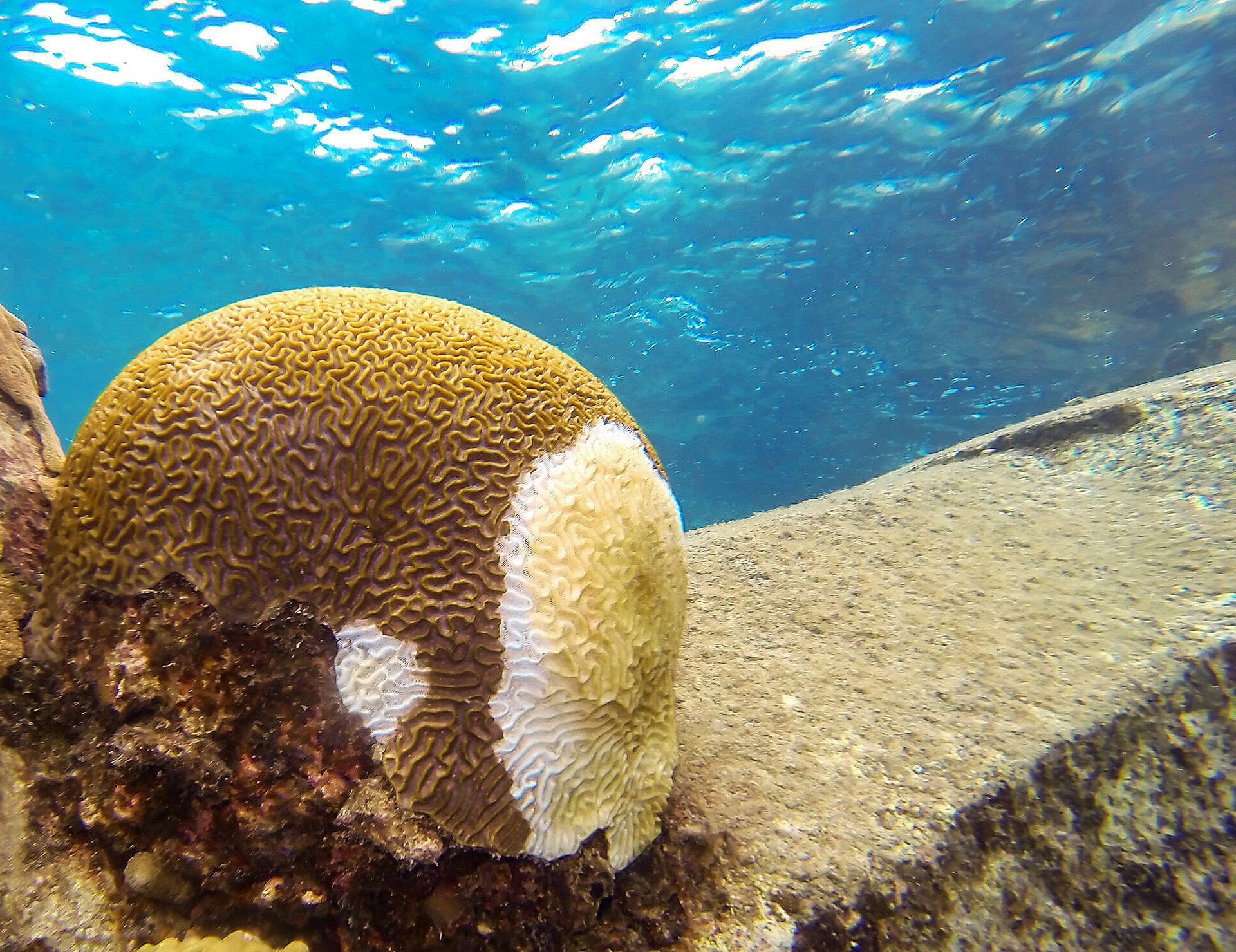
CORAL BLEACHING vs. SCTLD
A major difference between bleached corals and corals with SCTLD is that bleached corals are still alive and if environmental conditions return to normal rather quickly, the corals can regain their zooxanthellae and survive. However during this time if stressful conditions are prolonged, the corals become more susceptible to disease, predation, and ultimately, starvation. The appearance of SCTLD on a coral often means the whole colony will die very quickly.
Coral Bleaching: A Response to Environmental Stress
Coral bleaching occurs when coral colonies face environmental stressors like extremes in temperature or salinity, pollution, sedimentation, low oxygen or disease. As a result of one or more of these stressors, corals disassociate from their symbiotic relationship with their zooxanthellae and appear white. (
Zooxanthellae are symbiotic algae that give corals their coloration and photosynthesize to provide coral with food and energy.) Without the zooxanthellae, you can see straight through the translucent coral polyp to its skeleton below, making corals appear bright white. Hence the term coral bleaching.
Photo Courtesy of The Nature Conservancy
SCTLD is a relatively new threat to coral reefs in the Caribbean,
but coral bleaching, a longstanding concern for coral reef conservationists,
continues to occur. Often, it is difficult or almost impossible to differentiate
between the two impairments.
Localized or colony specific bleaching has been recorded for over 100 years, but only in the last couple decades have we seen mass coral bleaching events (when a wide range of species bleach over a large area). The most common cause of mass coral bleaching is elevated water temperatures (even 1 or 2 degrees C) and increased UV radiation due to calm weather and clear skies.
Recovery after bleaching events can be slow and adversely affected by other local stressors like pollution, sedimentation, overfishing and coral disease.
Photo courtesy of The Nature Conservancy
Stony Coral Tissue Loss Disease: A Dangerous Infection
Corals affected by SCTLD are at an even greater disadvantage – the white color of the coral shows us where the coral tissue has died exposing its skeleton. The stark white appearance is because the area of the coral has died off so recently that skeleton has only just been exposed to the water column, and no algae or other creature have had enough time to colonize the area yet.
Colonies that are experiencing SCTLD but still alive will have areas of bare white skeleton and areas with healthy colored tissue. The difference between SCTLD and coral bleaching is that the white area has no coral tissue left, and so even if the disease is effectively treated, the white portion of the colony is already dead and cannot recover without new tissue being regrown.
Photo courtesy of Joe Townsend
While some corals may experience total or partial bleaching they are often able to recover fully.
Colonies diagnosed with SCTLD, however, will likely die, usually within a few months.
This is why researchers and reef managers are working to intervene and treat SCTLD however possible.
Can corals be both bleached and have SCTLD?
Bleaching occurs when corals are stressed by facets of their environment, frequently temperature or pollution.
SCTLD occurs when a coral is exposed to the disease, and so therefore this may occur during a mass bleaching event, resulting in corals being both bleached and infected with SCTLD.
Scientists are still working to understand how this may affect the colony, and if the presence of this new disease exacerbates or mitigates bleaching. Because it can be very difficult to differentiate the two, it is important to report any suspicious looking coral to the Department of Planning and Natural Resources so that experts can respond to reports of both coral bleaching and SCTLD.
Photo courtesy of Sonora Meiling
Learn more about the territory’s bleaching response here
United States Virgin Islands Bleaching Response Plan- Updated August 2020




